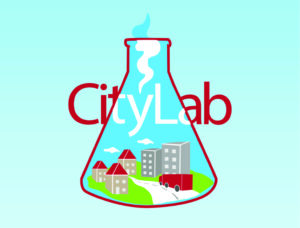Italy – TRElab Logistics Living Lab, Rome
From collecting plastic cups to a fully functioning living lab project. TRElab, which is the laboratory within the Roma Tre University that deals with transport research in the Department of Political Sciences, coordinates the city’s Logistics Living Lab (LLL). The key owner of the living lab is the City of Rome through the Department of Transport, supported by Roma Servizi per la Mobilità (the mobility agency).
The LLL arose from the CIVITAS City Logistics in Living Laboratories (CityLab) project (which started in 2015 and ended in 2018), which aimed to develop cost-effective and sustainable solutions to reduce the negative impacts on traffic and the environment related to the delivery of goods and the collection of waste in urban areas.
In the CityLab project, 7 cities (London, Brussels, Southampton, Oslo, Rome, and Paris) acted as testbeds for innovation and the implementation of measures that contribute to improving the efficiency and sustainability of urban logistics by exchanging experiences and developing methodologies. In addition, it aimed to develop knowledge and solutions to support the large-scale promotion of strategies, measures and tools that would contribute to the EU’s goal of achieving zero-emission urban logistics in city centers by 2030.
Description
The LLL, which focus lies on urban freight, resulted from the CITYLAB project and started in February 2020. It was established by TRElab, together with the City of Rome and the mobility agency. The establishment of this living lab was formalized through an administrative act by the city councilors, describing its key elements and how it will function. Within the LLL, stakeholders and users periodically discussed shared solutions to enhance sustainability and rationalization in urban logistic issues for the city of Rome.

TRElab’s scope of actions is focused on applied research. However, for the living lab, they deal with engagement, networking, and organizational aspects. TRElab intends to have a more formal structure of the living lab. An improved institutionalization would be realized by making the current participating actors official members of the LLL, implying a commitment to the priorities and target established. In the beginning, TRElab applied a bottom-up approach to show what “clients” (and whoever wanted to participate in the discussion) proposed. The priorities and the dynamics are currently clearer, and the intention is to narrow the scope to more concrete activities.
TRElab already has the credibility and the involvement of stakeholders. Currently, the University is paying fully for the living lab of the City of Rome. The final business model still needs to be defined.
The added value of TRElab is its position as an intermediary element (so called “honest broker”) between the public authority and the private sector. TRElab provides the reliable, qualified and scientific third-party opinion. They can bring all stakeholders at the same table to discuss about new solutions.
The actions of the LLL are market-driven, but at the same time the LLL has been started with measures and solutions identified in the SUMP of Rome. The SUMP is based on 8 subplans, and the one on urban logistics was developed by TRElab. Presently the targets thereby defined need to be translated into actions. Therefore, the added value is that TRElab is helping their “clients”, i.e. the city of Rome to apply the measures of the SUMP, and the business sector to undertake solutions aligned with it. The SUMP of Rome was explicitly based on engagement. As for logistics, TRElab opens their portal for local businesses and multinational companies to supply inputs.
TRElab learnings for other future living labs are to start with a focused theme and case. It allows the living lab to concentrate on the initial demonstration and applying the LLL methodologies.
References
- http://www.trelab.it/
- https://www.polisnetwork.eu/news/rome-kicks-off-logistics-living-lab/
- http://www.trelab.it/living-lab/ (only available in Italian)
- https://www.eltis.org/resources/case-studies/city-logistics-living-laboratories-italian-pilot
- Interview with Valerio Gatta, Edoardo Marcucci and Giacomo Lozzi (27/11/2020)
- Picture (CityLab project)